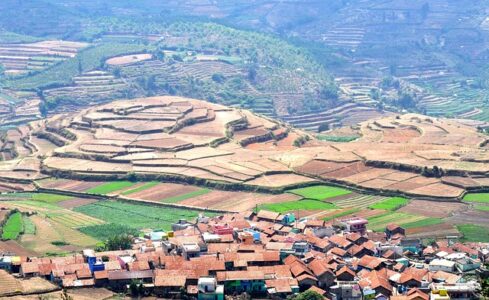Nutrition Smart Village Initiative
Context:
A programme on “Nutrition Smart Village” will be initiated to strengthen the Poshan Abhiyan.
- It will be part of the Azadi Ka Amrit Mahotsav, to commemorate the 75th year of Independence of India.
Nutrition Smart Village Initiative
- This new initiative aims to reach out to 75 villages across India through the network of All India Coordinated Research Project on Women in Agriculture (AICRP-WIA) which is in operation at 13 centres in 12 States of India.
- The initiative has been undertaken in line with the Prime Minister’s call to all the academicians, agricultural scientists and all the institutions to adopt and transform 75 villages.
- Under the initiative, a total of 75 villages will be adopted by AICRP centres and ICAR-CIWA, for which the AICRP centres will adopt 5 villages each with the remaining to be adopted by ICAR-CIWA with an aim to develop 75 Nutri-Smart villages.
- The objectives of the initiative are promoting nutritional awareness, education and behavioural change in rural areas involving farm women and school children, harnessing traditional knowledge through the local recipe to overcome malnutrition and implementing nutrition-sensitive agriculture through homestead agriculture and Nutri-garden.
- To achieve the goal of Malnutrition free villages, intensive awareness campaigns and field activities will be undertaken for focusing on the concept of Nutri-village / Nutri-food / Nutri-diet/ Nutri-thali etc. for strengthening the Poshan Abhiyan.
- Awareness among the women farmers will also be created about their legal rights in all walks of life. The products/tools/technologies developed by AICRP centres will be evaluated through multi-location trials.
About Poshan Abhiyaan:
- POSHAN Abhiyaan is an overarching umbrella scheme to improve the nutritional outcomes for children, pregnant women and lactating mothers.
- It does by holistically addressing the multiple determinants of malnutrition and attempts to prioritize the efforts of all stakeholders on a comprehensive package of intervention and services targeted on the first 1000 days of a child’s life.
- It seeks to do so through an appropriate governance structure by leveraging and intensifying the implementation of existing programs across multiple Ministries while at the same time trying to rope in the expertise and energies of a whole range of other stakeholders – State Governments, Communities, Think tanks, Philanthropic Foundations and other Civil Society Actors.
Targets:
- It aims to reduce child stunting, underweight and low birth weight by 2 percentage points per annum and anaemia among children (and young females) by 3 percentage points per annum.
- It is based on 4 pillars Ensuring access to quality services across the continuum of care to every woman and child; particularly during the first 1000 days of the child’s life.
Pillars
- Ensuring convergence of multiple programs and schemes: ICDS, PMMVY, NHM (with its sub components such as JSY, MCP card, Anaemia Mukt Bharat, RBSK, IDCF, HBNC, HBYC, Take Home Rations), Swachh Bharat Mission, National Drinking water Mission, NRLM etc.
- Leveraging technology (ICDS-CAS) to empower the frontline worker with near real time information to ensure prompt and preventive action; rather than reactive one.
- Jan Andolan: Engaging the community in this Mission to ensure that it transcends the contours of being a mere Government programme into a peoples’ movement inducing large scale behaviour change with the ownership of the efforts being vested in the community rather than government delivery mechanisms.
Scenario of Malnutrition in India:
- Despite decades of investment to tackle this malaise, India’s child malnutrition rates are still one of the most alarming in the world.
- The Global Hunger Index (2021) — which is calculated on the basis of total undernourishment of the population, child stunting, wasting and child mortality — places India at the 101st spot among 116 countries.
- The bane of child and maternal malnutrition is responsible for 15% of India’s total disease burden.
- According to the data from the fifth round of National Family Health Survey (NFHS) (2019-2021) from the 22 states surveyed so far, only 9 showed a decline in the number of stunted children, 10 in wasted children and six in underweight children.
- Research suggests that USD 1 spent on nutritional interventions in India could generate USD (34.1 to 38.6) in public economic returns three times more than the global average.
- Studies reveal that India loses up to 4% of its Gross Domestic Product (GDP) and up to 8% of its productivity due to child malnutrition.
Other Related Government Initiatives:
- Anemia Mukt Bharat Abhiyan
- Pradhan Mantri Poshan Shakti Nirman (PM POSHAN)
- The National Food Security Act (NFSA), 2013
- Pradhan Mantri Matru Vandana Yojana (PMMVY)
- Integrated Child Development Scheme (ICDS)
Source: PIB
Global Nutrition report 2021
You can find many articles on SCHEMES (part of GS II) in our website. Go through these articles share with your friends and post your views in comment section.



